
eBook - ePub
Hands-on Azure DevOps
CICD Implementation for Mobile, Hybrid, and Web Applications Using Azure DevOps and Microsoft Azure
Mitesh Soni
This is a test
Condividi libro
- English
- ePUB (disponibile sull'app)
- Disponibile su iOS e Android
eBook - ePub
Hands-on Azure DevOps
CICD Implementation for Mobile, Hybrid, and Web Applications Using Azure DevOps and Microsoft Azure
Mitesh Soni
Dettagli del libro
Anteprima del libro
Indice dei contenuti
Citazioni
Informazioni sul libro
A step-by-step guide to implementing Continuous Integration and Continuous Delivery for Mobile, Hybrid, and Web applications Key Features
- This book covers all these practices that can be utilized in real-life scenarios with sample applications written in Java, Android, iOS, Node.js, Angular, Ionic Cordova, Xamarin, Python, and PHP.
- This book provides detailed insight into Microsoft Azure Cloud, especially Platform as a Service Model - Azure App Services.
- This book utilizes the Multi-Stage Pipeline Feature of Azure DevOps. Step by Step implementation of Continuous Practices of DevOps makes it easy to understand even for beginners of DevOps practices.
-
Description
This book will cover an approach that includes the understanding of DevOps, Assessment of AS-IS state, DevOps Practices Implementation and measurement of success. The main objective is to demonstrate Continuous Practices of DevOps Culture using Microsoft Azure DevOps and Microsoft Azure Cloud across different types of applications such as Mobile apps, Hybrid Mobile App, and Web applications. The main idea is to have a uniform approach across different types of applications such as Mobile apps, Hybrid Mobile App, and Web applications. It is important to have a uniform approach of DevOps Practices implementation in an application written in different programming languages such as Java, Android, iOS, Node.js, Angular, Ionic Cordova, Xamarin, Python, and PHP. What will you learn
- Learn to create a Multi-Stage (CICD) Pipeline for sample applications
- Configure Unit Test Execution and Code Coverage Reports in Azure DevOps for sample applications
- Create and configure Cloud resources using Platform as a Service Model - Azure App Services for Web Applications and deploy Web Applications to Azure App Services using Pipeline
- Understand how to distribute Mobile App Packages (APK and IPA) to App Center
-
Who this book is for
This book is suitable for DevOps Consultants, DevOps Evangelists, DevOps Engineers, Technical Specialists, Technical Architects, Cloud Experts, and Beginners. Table of Contents
1. Overview of DevOps Practices
2. DevOps Assessment – Measure the "AS-IS" Maturity
3. DevOps Practices Implementation for Android App – Azure DevOps Pipelines
4. DevOps Practices Implementation for iOS App – Azure DevOps Pipelines
5. DevOps Practices Implementation for Native Apps using App Center
6. DevOps Practices Implementation for Java App – Azure DevOps Pipelines
7. DevOps Practices Implementation for Node.js Apps – Azure DevOps Pipelines
8. DevOps Practices Implementation for Angular App – Azure DevOps Pipelines
9. DevOps Practices Implementation for Python and, PHP – Azure DevOps Pipelines
10. DevOps Practices Implementation for Hybrid Mobile App (Ionic and Xamarin) – Azure DevOps Pipeline
11. Azure DevOps Best Practices
12. Measure Benefits of DevOps Practices Implementations About the Author
Mitesh is a DevOps engineer. He is in love with the DevOps culture and concept. Continuous improvement is his motto in life with existing imperfection. Mitesh has worked on multiple DevOps practices implementation initiatives. His primary focus is on the improvement of the existing culture of an organization or a project using Continuous Integration and Continuous Delivery. He believes that attitude and dedication are some of the biggest virtues that can improve professional as well as personal life! He has good experience in DevOps consulting, and he enjoys talking about DevOps and CULTURE transformation using existing practices and improving them with open source or commercial tools.
Domande frequenti
Come faccio ad annullare l'abbonamento?
È semplicissimo: basta accedere alla sezione Account nelle Impostazioni e cliccare su "Annulla abbonamento". Dopo la cancellazione, l'abbonamento rimarrà attivo per il periodo rimanente già pagato. Per maggiori informazioni, clicca qui
È possibile scaricare libri? Se sì, come?
Al momento è possibile scaricare tramite l'app tutti i nostri libri ePub mobile-friendly. Anche la maggior parte dei nostri PDF è scaricabile e stiamo lavorando per rendere disponibile quanto prima il download di tutti gli altri file. Per maggiori informazioni, clicca qui
Che differenza c'è tra i piani?
Entrambi i piani ti danno accesso illimitato alla libreria e a tutte le funzionalità di Perlego. Le uniche differenze sono il prezzo e il periodo di abbonamento: con il piano annuale risparmierai circa il 30% rispetto a 12 rate con quello mensile.
Cos'è Perlego?
Perlego è un servizio di abbonamento a testi accademici, che ti permette di accedere a un'intera libreria online a un prezzo inferiore rispetto a quello che pagheresti per acquistare un singolo libro al mese. Con oltre 1 milione di testi suddivisi in più di 1.000 categorie, troverai sicuramente ciò che fa per te! Per maggiori informazioni, clicca qui.
Perlego supporta la sintesi vocale?
Cerca l'icona Sintesi vocale nel prossimo libro che leggerai per verificare se è possibile riprodurre l'audio. Questo strumento permette di leggere il testo a voce alta, evidenziandolo man mano che la lettura procede. Puoi aumentare o diminuire la velocità della sintesi vocale, oppure sospendere la riproduzione. Per maggiori informazioni, clicca qui.
Hands-on Azure DevOps è disponibile online in formato PDF/ePub?
Sì, puoi accedere a Hands-on Azure DevOps di Mitesh Soni in formato PDF e/o ePub, così come ad altri libri molto apprezzati nelle sezioni relative a Computer Science e Cloud Computing. Scopri oltre 1 milione di libri disponibili nel nostro catalogo.
Informazioni
Argomento
Computer ScienceCategoria
Cloud ComputingSection II
DevOps Practices Implementation using Azure DevOps, Microsoft Azure and App Center
CHAPTER 3
DevOps Practices Implementation for Android App – Azure DevOps Pipelines
Azure multi-stage pipelines provide a simple way to create a pipeline using templates as well as Branch Policies to configure Continuous Integration (CI) and Continuous Delivery (CD) pipeline for Android Applications. Azure multi-stage Pipelines provides features to add extensions such as Build Quality Checks to verify Code Coverage. We can distribute an Android application to specific group of testers or another group users using App center. The multi-stage pipelines are all about ease of use and maintainability.
Structure
In this chapter, we will discuss the following topics:
- Azure DevOps organization
- Multi-stage pipeline for Android app
- Continuous Integration for Android app
- Continuous Delivery for Android app
Objectives
After studying this unit, you should be able to:
- Understand how to perform Lint Analysis for Android application
- Execute unit tests
- Calculate code coverage
- Verify Build Quality
- Create an APK file
- Deploy APK to App Center
In this chapter, we will try to cover CICD for sample Android applications.
DevOps practices: Continuous Integration and Continuous Delivery
In this book, we will cover CICD implementation with Azure DevOps. We will also provide some valuable notes related to DevOps, culture, challenges, market trends, and so on for better understanding.
Azure DevOps provides Azure Boards, Azure Pipelines, Azure Repos, Azure Test Plans, Azure Artifacts, and Extensions Marketplace. Let’s start the journey. We will use different Azure DevOps services across different chapters in this book. The main objective is to provide a quick overview of CICD implementation in Azure DevOps.
Azure DevOps
We need to create an organization in the Azure DevOps before we start using Azure DevOps services.
- Click on Create new organization to utilize Azure DevOps services.
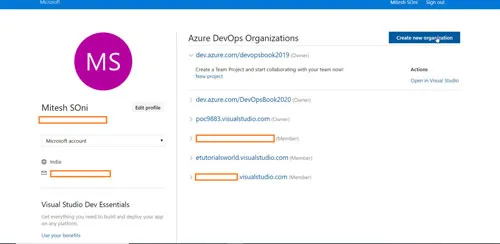 Figure 3.1: Azure DevOps Organizations
Figure 3.1: Azure DevOps Organizations - Click on Continue.
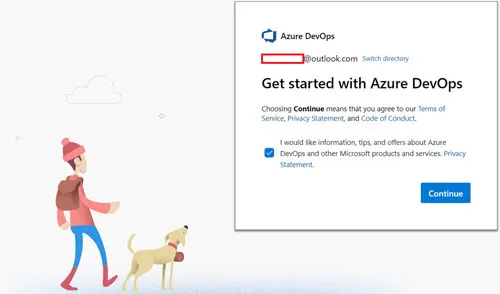 Figure 3.2: Get started with Azure DevOps
Figure 3.2: Get started with Azure DevOps - Provide the name of the organization and select region where you want to host your projects.
 Figure 3.3: New Organization in Azure DevOps
Figure 3.3: New Organization in Azure DevOps
We have created an organization in Azure DevOps. In the next section, we will configure CICD for the Android application.
Continuous Integration and Continuous Delivery for Android application
We will create a Project first in Azure DevOps Dashboard for newly created organizations.
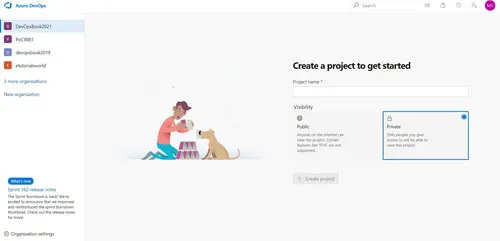
Figure 3.4: Organization Dashboard
- Provide a
Project nameand select theVisibilityof the project. - Click on
Create project.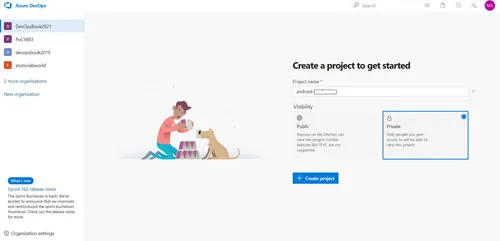 Figure 3.5: New ProjectOnce our project is ready, we can use Azure DevOps services for CICD implementation.
Figure 3.5: New ProjectOnce our project is ready, we can use Azure DevOps services for CICD implementation.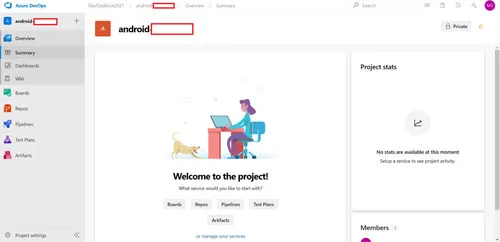 Figure 3.6: Project Dashboard
Figure 3.6: Project Dashboard - Click on
Repos. We will need a sample application code to operate on it.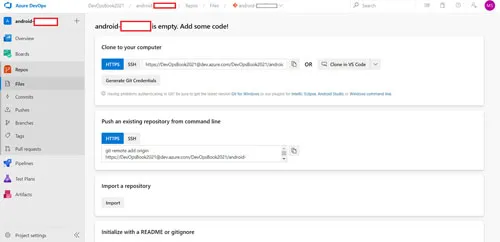 Figure 3.7: Project Repo
Figure 3.7: Project Repo
In the next section, we will try to import the repository.